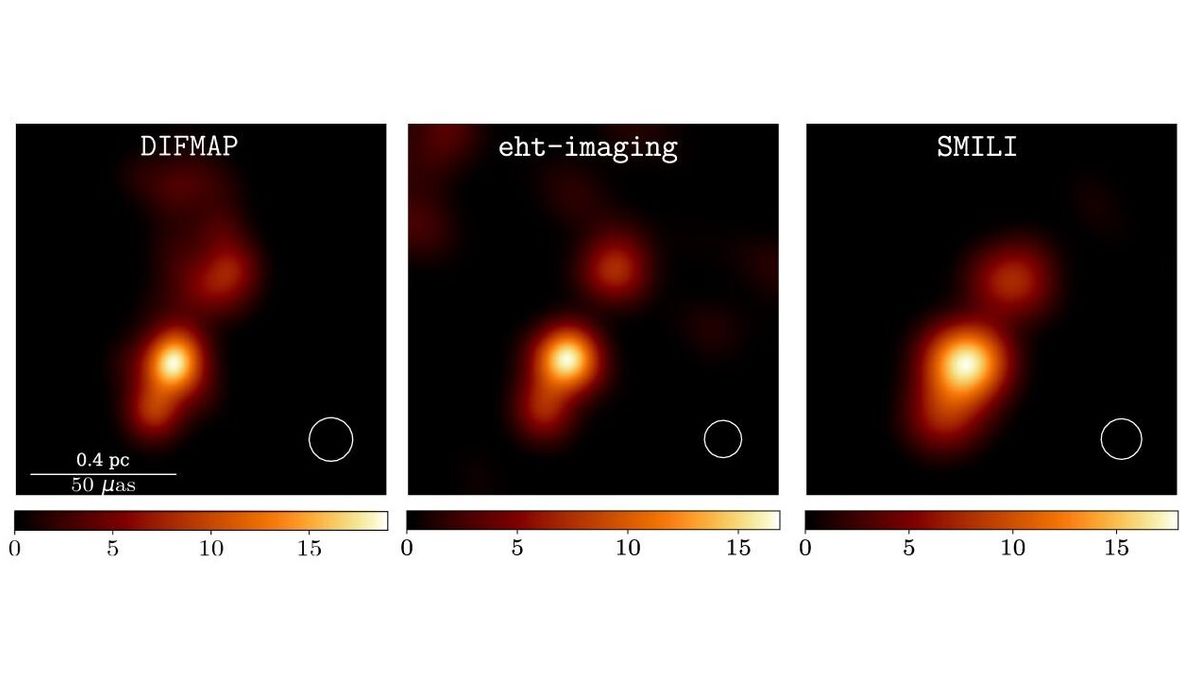
The Event Horizon Telescope (EHT) is a virtual telescope that connects observatories all over the world. Thanks to a quirk of physics, the resulting instrument is the size of our planet, and it has been used to snap the first close-up images of supermassive black holes: Sagittarius A* at the center of the Milky Way, and the enormous one at the center of M87. Now, researchers report even further observations.
The target was quasar NRAO 530. A quasar is the active state of a supermassive black hole, when it is feeding on so much material so quickly that some of it is pushed away speeds high enough to form jets. And those jets are so bright that they can easily outshine their host galaxies. Quasars are the most luminous objects in the known universe.
The formation of jets and other mechanisms that power quasars are not fully understood, so deep observations of quasars are important. But given their distance, you need an incredible instrument like the EHT that has a resolution equivalent to seeing a doughnut on the surface of the Moon.
Still, studying NRAO 530 was not easy. And despite the observations having been taken in 2017, it took a while for the research team to be able to fully understand the properties of this jet of material. One exciting measurement is the polarization of light. Light is just an oscillation of electric and magnetic fields, each perpendicular to the other.
In polarized light, all the electric fields are oscillating on planes parallel to each other. This property permits, for example, the creation of 3D images in movies, where the lenses let through just one polarization of light (so your eyes are getting different images). In astronomical sources, the polarization of light depends on the magnetic field around a source, and the researchers were able to establish that the jet, with its helical magnetic field, is shaped a bit like a spiral staircase.
“The outermost feature has a particularly high degree of linear polarization, suggestive of a very well ordered magnetic field,” lead author Dr. Svetlana Jorstad, a senior scientist at Boston University, USA, who leads the NRAO 530 project, said in a statement.
Observations by the EHT have been conducted since 2017 and more detailed observations will be released in the coming years. Still, the work breaks some incredible observational records.
“It’s also the most distant object that we have imaged with the EHT so far. The light that we see traveled towards the Earth for 7.5 billion years through the expanding universe, but with the power of the EHT we see the details of the source structure on a scale as small as a single light-year,” added Dr. Maciek Wielgus, a scientist at the Max Planck Institute for Radio Astronomy in Bonn, Germany, co-leading this study.
The work was published in The Astrophysical Journal.
Source Link: Earth-Sized Telescope Snaps Image Of One Of The Brightest Lights In The Universe